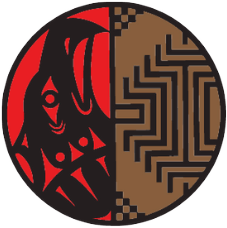Middle School Unit 1 Washington State History

Corresponding Videos
Tribal Perspectives of American History in the Northwest
- Chapters 1-3
- Tribal Perspectives Teacher Guide
- 1881 Thomas Symons Map
- Timeline
- Blank Timeline
- Linguistic Map
- NW Tribal Homeland Territories Base Map
- USGS Base Map
Native Homelands Along the Lewis and Clark Trail
Contemporary Voices Along the Lewis and Clark Trail
Territory and Treaty Making: The Point No Point Treaty
Historical Era
1854 - 1889 The Treaty Era
STI Unit Overview
Unit Goals:
- To develop students' abilities to seminar, present and justify a point of view on a historical issue.
- To develop students' abilities to organize, write and illustrate the key elements involved in a historical period or issue.
- To develop students' ability to interpret historical information and develop hypotheses on why things occurred in history.
- To provide students with ability and knowledge to explain the nature of treaties negotiated by the United States Government and the meaning of tribal sovereignty.
- To provide students with ability and knowledge to explain the basic issues and motivating forces during the treaty period in Washington Territory.
- To provide students with the ability to explain and illustrate the relationships between and among environment, culture, and economics.
- To provide students with the ability to read and analyze current issues that involve treaty tribes, especially the Point No Point Treaty tribes.
Goals Related to the Why History? Classroom-Based Assessment
- To help students develop a position on how history helps us understand the present by exploring the background of the Stevens Treaties, specifically the Point No Point Treaty and the culture and society of the tribes party to it, then relating that background to current issues.
- To help students cite specific pieces of evidence to justify the relevance of events from the history or background of the Point No Point Treaty to understanding current issues.
Unit Outline:
- Physical and Cultural Geography of the Olympic Peninsula Pre-Treaty Times
Essential Question: How does physical geography affect the distribution, culture, and economic life of people who live in a particular area? - Nation Within a Nation
Essential Question: What is the legal status of Indian Tribes as sovereign nations with respect to the United States Government? - The Point No Point Treaty
Essential Question: What were the political, economic, and cultural forces consequential to the Point No Point Treaty that led to the movement of people on the Olympic Peninsula from their long established home sites to reservations? - Repercussions and the Point No Point Treaty
Essential Question: What are the ways in which people respond to outside pressures including external governments that threaten to extinguish their cultures and independence? What are the ways Indian people of the Olympic Peninsula responded to outside pressures such as encroaching non-Indian settlement, missionaries, boarding schools, and the reservation system? - Enduring Cultures: People of the Olympic Peninsula Today
Essential Question: What have Point No Point Treaty tribes done to meet the challenge of reservation life? What have these tribes, as sovereign nations, done to meet the economic and cultural needs of their tribal communities?
Culminating Project and Unit Assessment -Why History? CBA
- Students will present a clearly stated position on how history helps us understand the present by exploring the background of the Stevens Treaties, specifically the Point No Point Treaty and the culture and society of the tribes party to it, then relating that background to current issues.
- Students will accurately site at least two specific pieces of evidence to justify the relevance of at least two events from the history or background of the Point No Point Treaty to understanding current issues. Why History? CBA
- Possible Extension Activity: Students will provide a plausible and explicitly supported interpretation of the relationship between the geography of the Olympic Peninsula and the events being discussed (above).
Standards for Social Studies, English Language Arts, Environmental and Sustainability Education, and Social Emotional Learning
OSPI-Developed Assessments for Social Studies
Unit Developed By
This unit was organized and written by Llyn De Danaan, Ph.D. with the support and collaboration of staff of the Evergreen Center for Educational Improvement
Thanks to Bruce Miller (Skokomish) Michael Pavel (Skokomish), and Denny Hurtado (Skokomish) for guidance in producing this unit. Thanks to Karen James for content suggestions and editorial support. Thanks to Dr. Janice Kido for suggestions on curriculum design.






